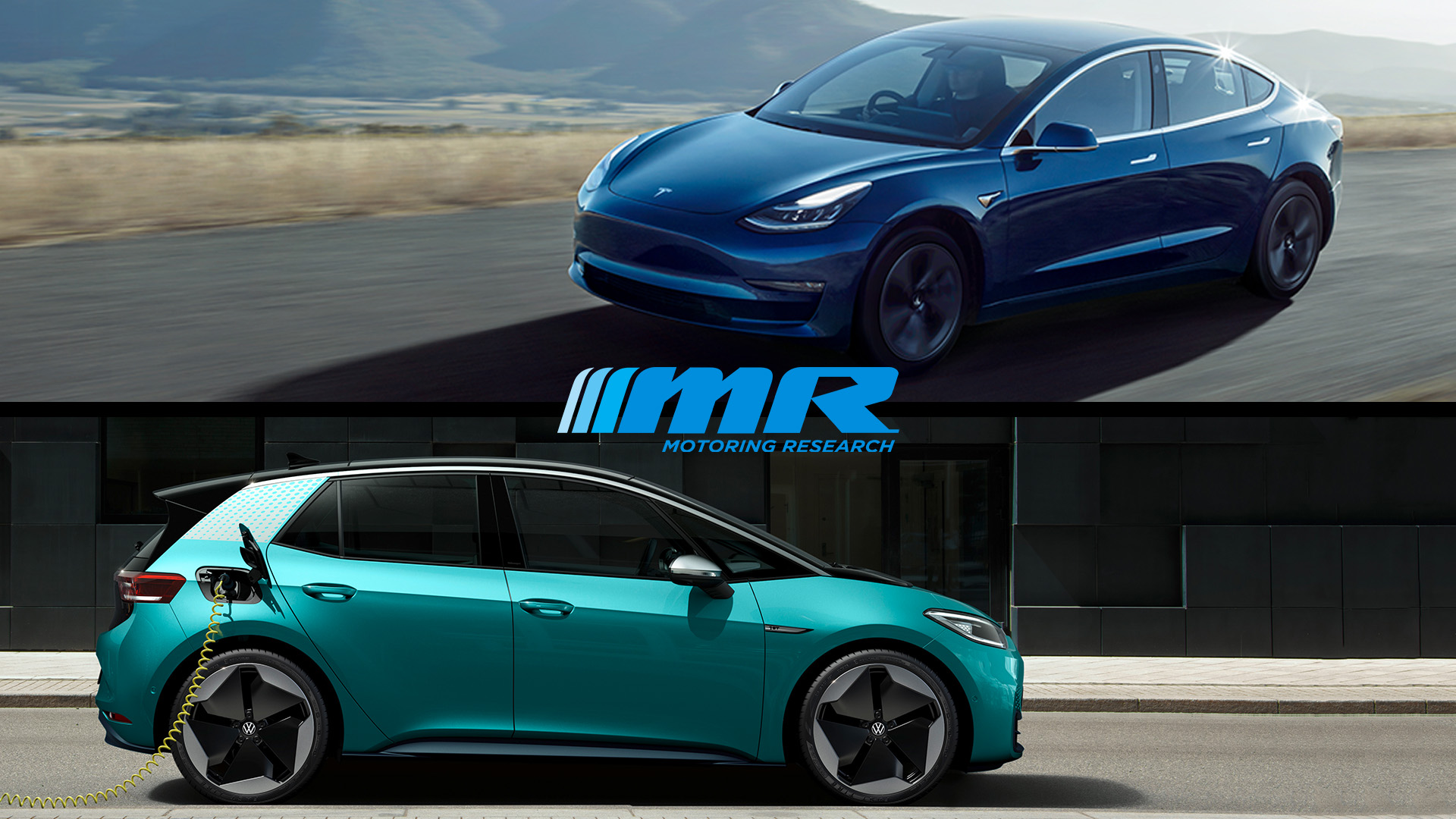
Range anxiety is a concern for electric car buyers. As our EV charging infrastructure finds its feet, the priority for many buyers is getting from A to B without having to charge in-between. We’ve done the research and ranked which EVs go how far on a full charge, according to the more realistic WLTP test cycle.
Smart EQ – 65 miles or more

The Smart seems like a car that should always have been electric. And now the entire Smart range is indeed battery-powered: choose from ForFour, ForTwo Coupe and ForTwo Cabriolet models. With less than 100 miles’ range, they’re hardly long-distance cars, but are capable in the city. Pricey, though, with the ForTwo Coupe starting from £16,850 after the government electric car grant.
Mini Electric – 124 miles

The new Mini Electric is open for ordering, with deliveries expected in March 2020. With an on-the-road price of £24,400 (after the grant is deducted) it’s cheaper than the Honda e, but the range is a similarly-limited 124 miles. A compact 32.5 kWh battery has been used to keep weight down, with Mini keen to preserve its famous ‘go-kart’ handling characteristics.
Honda e – 137 miles
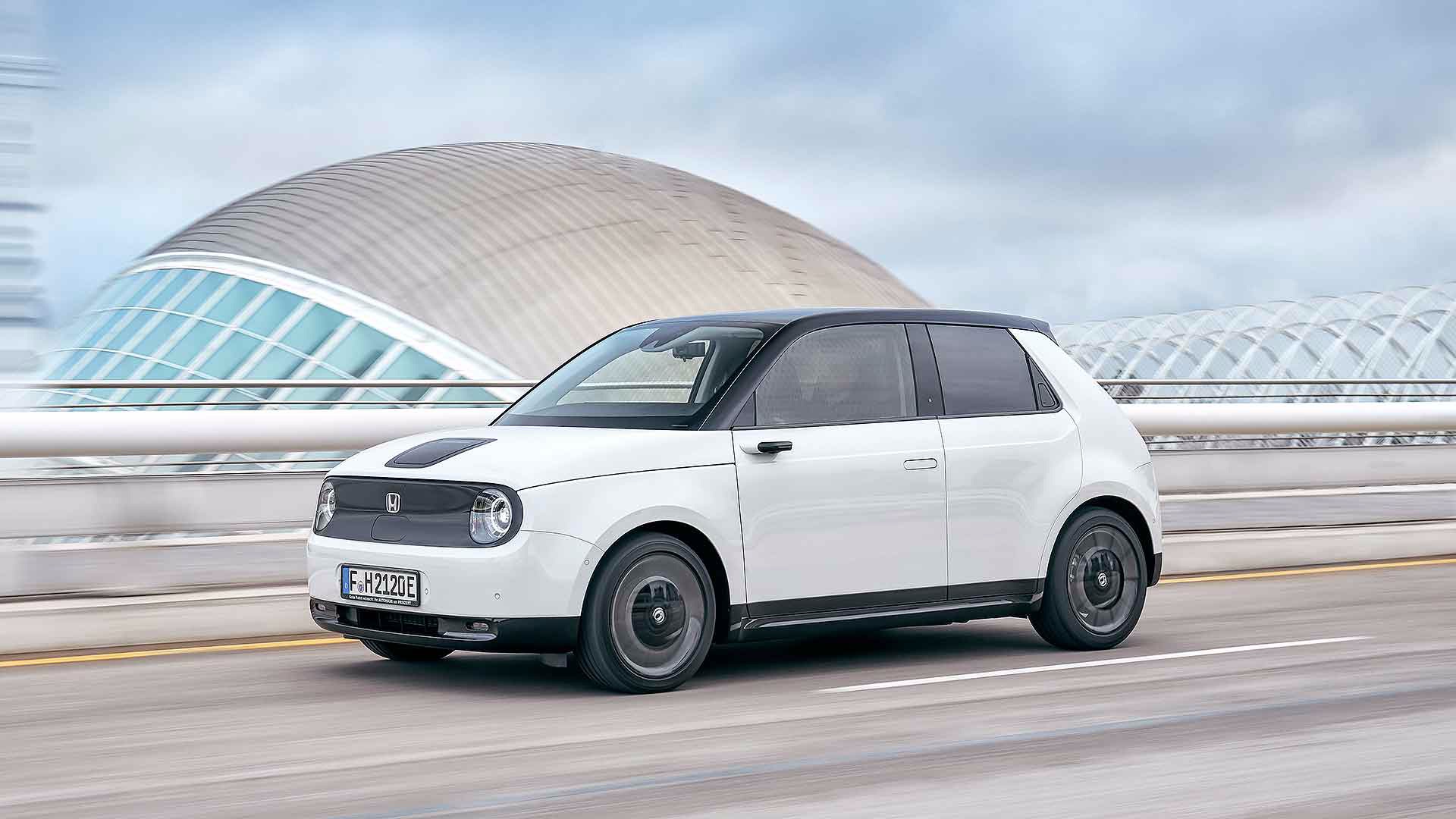
We called the Honda e a ‘class act’ in our recent review. But the car will raise eyebrows for some, especially given its price. It manages just 137 miles between charges, and that’s on the smaller wheels. ‘The two elephants in the room are range and price,’ said Richard after driving it. ‘Those who understand [the Honda e] won’t mind paying a premium. But both factors mean it’s not an everyman EV’. Post-grant prices are £26,160 for the 100 kW version, while the 113 kW model costs £28,660. Alternatively, finance starts from £299 per month.
Volkswagen e-Up – 162 miles

Volkswagen recently updated the electric version of its Up city car. The new e-Up has a certified WLTP range of 162 miles. On its website, VW says ‘That’s more than enough to get you from London to Brighton and back’. Indeed it is.
Skoda Citigo e iV – 162 miles

The new Skoda Citigo e iV, based on the e-Up, went on sale in December 2019 and costs from £16,995. That’s after the plug-in car grant and based on the entry-level SE. The Citigo also offers a driving range of 162 miles, while the top-spec SE L can be charged using a CCS cable connected to a 40kW DC fast charger.
MG ZS EV – 163 miles

‘The people’s electric car’ as MG calls it, caused a stir at launch, with the company initially matching the £3,500 government grant for early adopters of its new crossover. It’ll deliver 163 miles on the WLTP cycle, and now costs £24,995 post-grant.
BMW i3 – 193 miles
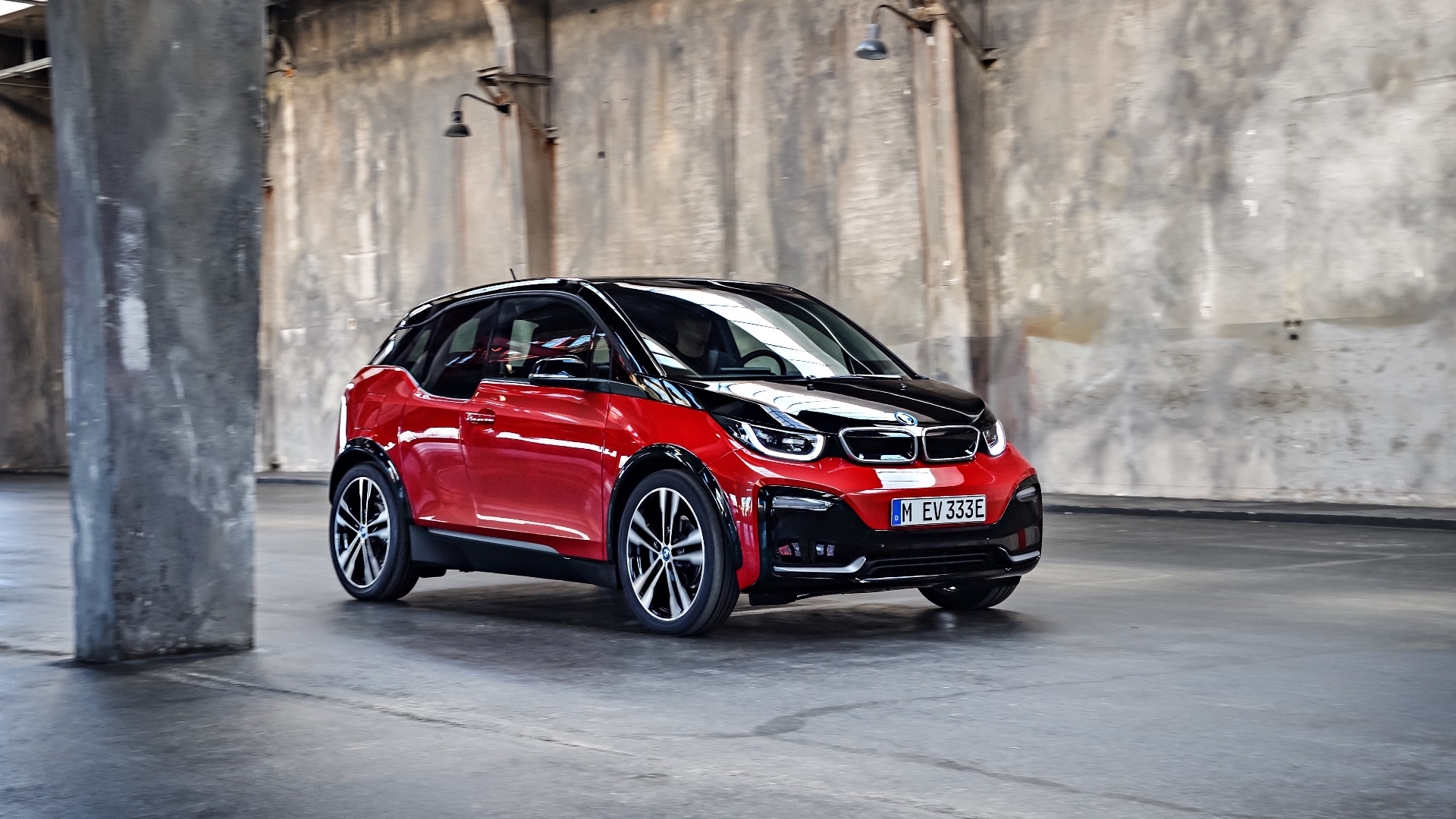
If you want a motorsport-style carbon fibre chassis, rear-wheel drive and 19-inch alloy wheels, an electric car might not be your first choice. But these are exactly what the BMW i3 offers, along with a range of 193 miles for the recently revised 120Ah model. You also get 0-62mph in 7.3 seconds, funky ‘suicide’ rear doors and the kudos of a premium badge. Prices start at £31,680 after the EV grant.
Hyundai Ioniq – 194 miles

The Ioniq isn’t just one model. Instead, Hyundai has built three versions of the same car: hybrid, plug-in hybrid, and battery EV. Updated for 2020, the EV has a 135hp motor and a WLTP range of 194 miles. Keenly priced at £29,450 (including the grant), it shows the benefits of designing an EV from the ground up, rather than converting a conventional car.
Vauxhall Corsa e – 205 miles

The Vauxhall Corsa-e is available for a competitive £295 a month on a four-year personal lease contract after a £5,310 initial lump sum. Alternatively, you can get a guaranteed £2,000 part-exchange on your old car. The 50kWh battery in the Corsa-e offers 205 miles of electric range, although this can be extended by 40 percent if you use a special Eco mode.
DS 3 Crossback E-Tense – 206 miles

New to the scene is the DS 3 Crossback E-Tense. It packs a 50kWh battery and is good for a 206-mile range. Not bad, but not quite up there with certain Korean rivals. It’s got French style on its side, though.
Peugeot e 208 – 217 miles

The Peugeot e-208 is more expensive than the Mini Electric, but its 217-mile range is more impressive. It costs from £25,050 after the government grant, while the top-spec e-208 GT is priced at £29,250. Unlike the Renault Zoe, which was designed as an electric car, the e-208 shares much in common with petrol and diesel 208s – and indeed the new 2008 crossover, which is also available as an EV.
Nissan Leaf – 239 miles
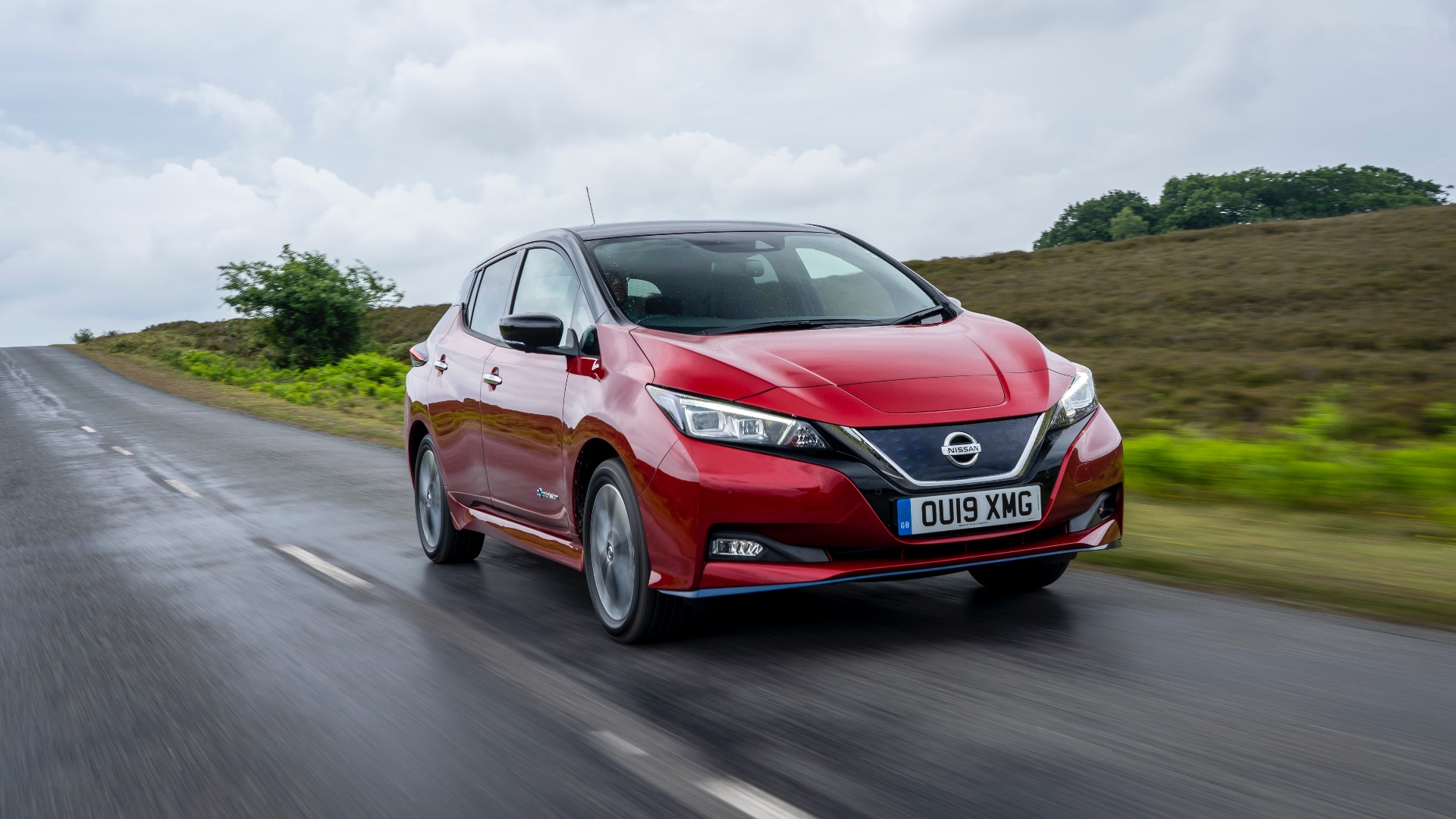
You can now buy a Nissan Leaf with 239 miles of WLTP-certified range. The newly updated looks are less apologetic and the cabin is much more attractive. The second-generation Leaf feels a major step, then – especially in this new 62kWh guise. The ‘e-Pedal’ makes driving easy, too; braking is often simply a matter of lifting off the accelerator.
Audi E-tron – 239 miles

The Audi E-Tron is a relatively late entry to the EV market for a marque that’s been so openly curious about electric cars in recent years. As well as a WLTP-rated range of 239 miles, you get up to 400hp and cameras instead of wing mirrors. The £71,000 E-tron marks the start of a 12-car Audi EV onslaught.
Renault Zoe ZE50 – 242 miles

In new ZE50 spec, the Zoe can cover 242 miles on a charge. Its interior has been comprehensively updated, too, which is very welcome. The Zoe ZE50 costs from £18,670 (after the grant), and 50kW rapid charging capability is now offered.
Volvo XC40 Recharge – 250 miles

Volvo’s first all-electric car combines a 0-62mph time of 4.9 seconds with an EV driving range of nearly 250 miles. The XC40 Recharge P8 AWD has two electric motors, giving a total output of 408hp. Total battery capacity is 75kWh, and Volvo says the batteries will recharge from zero to 80 percent in 40 minutes. It’s the first of a new range of all-electric Volvos, with the company planning to launch one a year between now and 2025.
Mercedes-Benz EQC – 259 miles

Beating the Audi E-tron to the punch is the EQC SUV from Mercedes-Benz. Packing a comparatively small 80kWh battery, its 259-mile WLTP-certified range is impressive. Prices start at £64,925. Expect a veritable tidal wave of EQ-branded electric models from Mercedes going forward.
Hyundai Kona Electric – 279 miles

The circa-£30,000 Hyundai Kona Electric 64kWh shows that EVs don’t need much fanfare. It’s a silent revolution, most obviously in terms of its powertrain, but also in terms of hype. It’s delivers premium EV range for half the price. You’ll struggle to get more miles-per-pound anywhere else.
Kia E Niro – 282 miles WLTP

Unless you buy the Kona Electric’s sister car, that is. The Kia e-Niro will also cost around £30,000 when the 64kWh model arrives. As with the Hyundai, it offers E-tron-beating range for a budget price.
Porsche Taycan – 287 miles
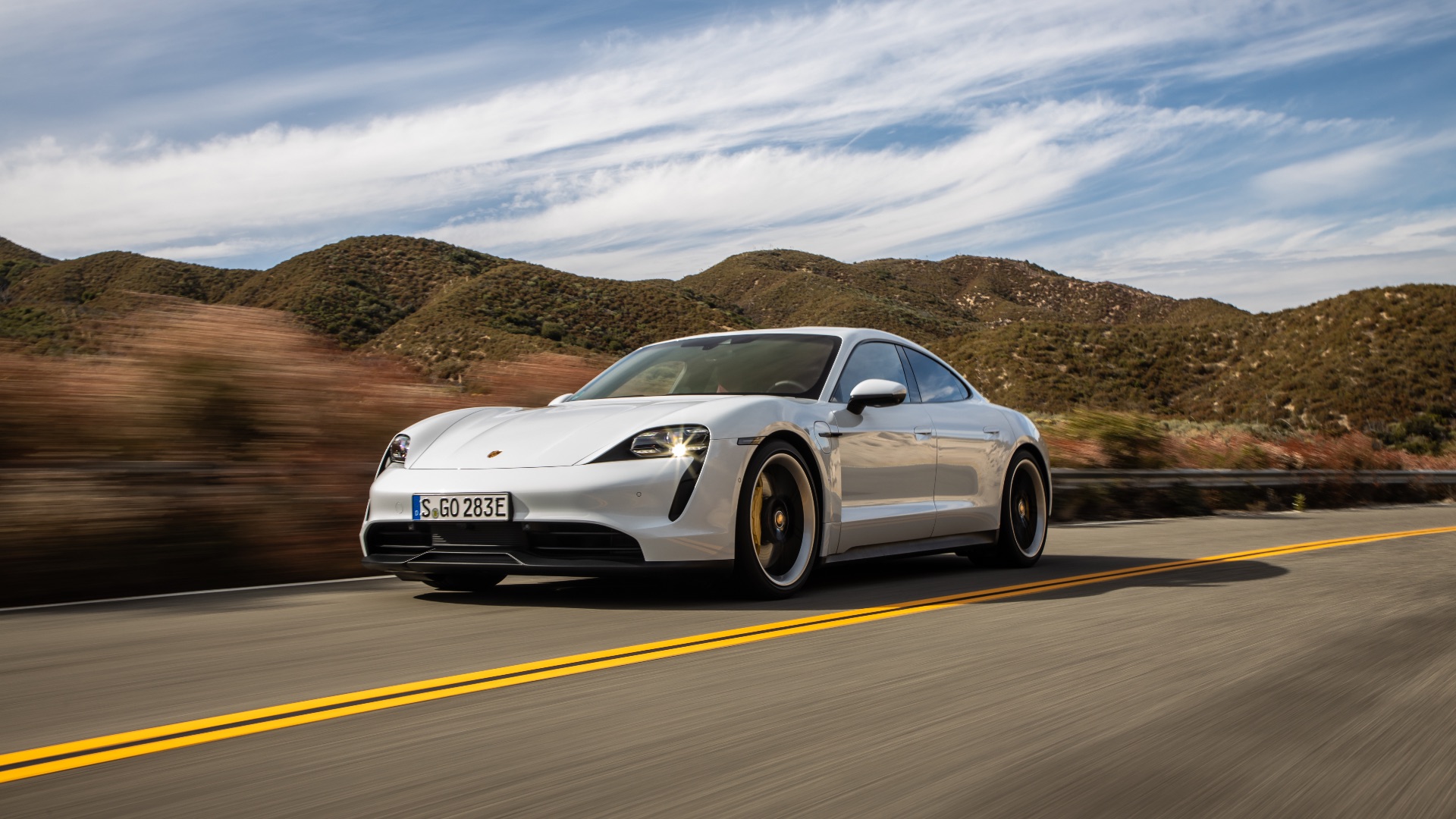
The German marque’s first EV has a lot riding on it – and a lot to prove. Can EVs be fun? Like, Porsche-level fun? The Taycan is certainly pricey and fast. The one to buy is surely the entry-level 4S with Performance Battery Plus. That’s how you’ll get 287 miles of range, anyway, and it’s far cheaper than other models, costing from £83,000.
Jaguar I-Pace – 292 miles
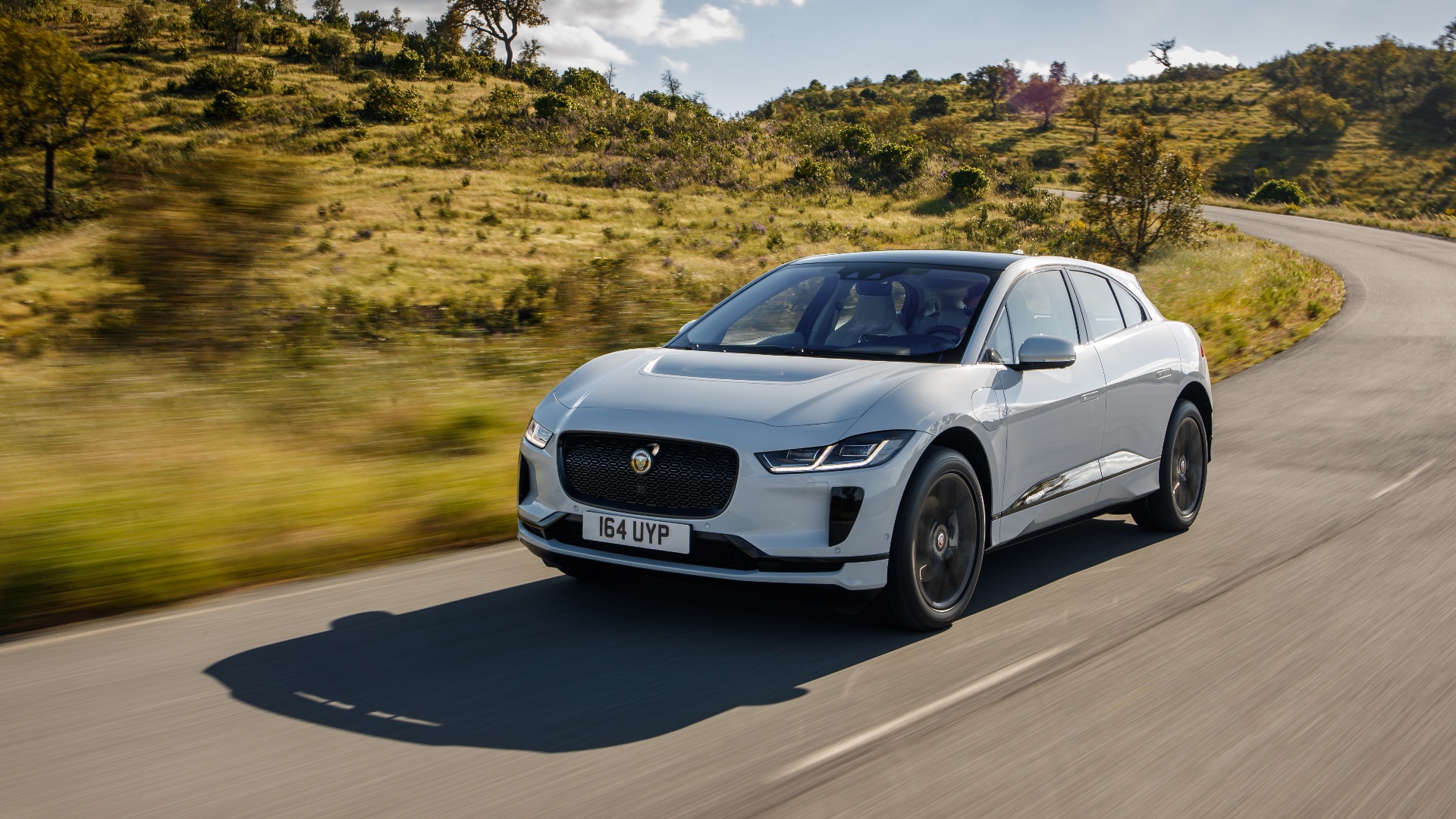
The Jaguar I-Pace has the Germans licked for now. Not only did it get to market months earlier, it also offers a superior range. While Audi and Mercedes are talking about closer to 250 miles, Jaguar was there months ago with 292 miles of WLTP-certified range. Couple that with 400hp and startling looks and you’ve got a leader in this fledgling premium EV class.
Polestar 2 – 310 miles est.

Volvo’s new electric offshoot has wasted no time producing rivals to Tesla. Like the Model 3, the Polestar 2 is a small executive car. Unlike the Model 3, it has the ride height and stance of an SUV. Up to 310 miles of range will reportedly be available, with a lower-range model available from £34,000. You can order one now, online only, with first deliveries expected later this year.
Tesla Model X – 315 miles

If you need to make six passengers vomit profusely, but with the guilt-free feeling of electric power, a Model X P100D is just the job. The ‘P’ stands for performance, and means a 100kWh battery pack mated to uprated electric motors. The result is a range of 315 miles. However, a 0-60mph time of 2.9 seconds is the bigger party-trick for this £129,200 SUV.
Volkswagen ID.3 – 340 miles

It might not be the most exciting new electric car, but it’s what the Volkswagen ID.3 can do for the entire industry that’s most intriguing. VW hopes it will have the same impact as the Beetle and the Golf – hence the ID.3 name – and it will be interesting to see if it affects sales of the new Mk8 Golf. Up to 341 miles of range is available, with top-end First Edition cars available from £35,000.
Tesla Model 3 – 348 miles

Tesla’s answer to the BMW 3 series has been lauded by some as the best car on sale: high praise for a car sold by one of the most controversial figures in motoring. Its popularity and appeal is hard to ignore, though. Long Range versions will drive for 348 miles on the WLTP cycle. Coming beyond 2020 will be the Model Y crossover, also based on the Model 3.
Ford Mustang Mach-E – 370 miles est.

The fact that this iconic Ford has gone electric continues to raise a few eyebrows, but the use of the Mustang name makes sense. As does the fact that it’s an electric SUV, because that’s what the world wants. Available with a choice of two batteries and three power outputs, the Mach-E could offer up to 370 miles of electric range. It’s packed with the latest tech, while practicality is guaranteed thanks to a large 402-litre boot and 100-litre ‘frunk’.
Tesla Model S – 379 miles
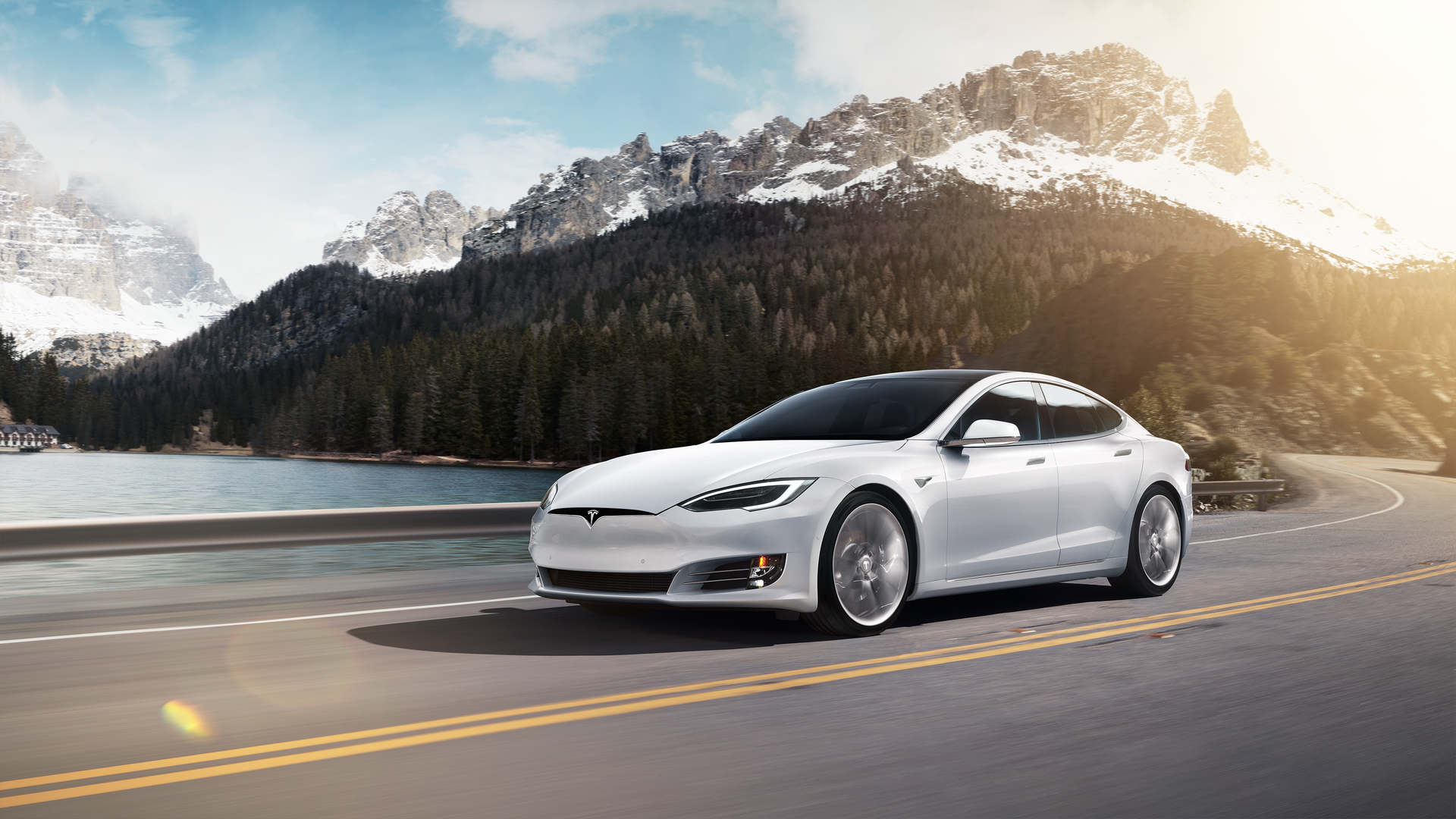
Forgo the need to get ‘Ludicrous’ with your Model S and you can save over £40,000 – and gain additional range. The upgraded EV still achieves supercar-rivalling performance, too. At present, it goes the furthest on a single charge of any EV, with a WLTP-rated range of 379 miles.